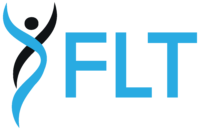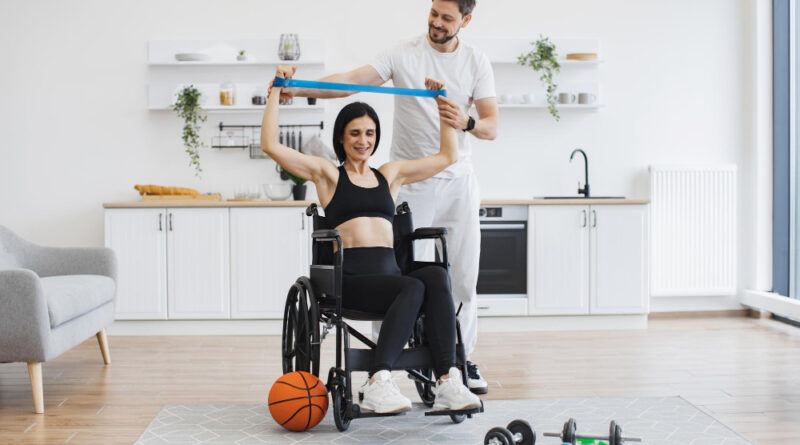Adaptive Fitness for Disabilities
Definition of adaptive fitness
Imagine exercise facilities and programs that welcome people just as they are and say, “Let’s work with what you’ve got.” That’s what adaptive fitness is all about. It refers to a personalized, dynamic, and flexible style of exercising. It’s much more than just a generic workout, just like your very own, unique playlist of songs. Adaptive fitness for disabilities entirely focuses on each individual’s capacity and fitness level. Whether it is by creating an adapted workout regimen for individuals with disabilities, adjusting the workout to cater to wheelchair users, or creating training programs to ensure that every individual gets the best fitness options for them.
Importance of adaptive fitness for disabilities
Fitness is an important part of everyone’s life. However, people with disabilities have not always had the proper attention they need from the fitness industry. While it can be difficult to focus each person individually with customized regimen but its not impossible. This is where adaptive fitness comes in, to make sure that everyone, even people with disabilities are accepted and treated equally.
Adaptive fitness is here to shake things up for people with disabilities so that they can also enjoy the exclusive post-workout glow mixed with that good kind of soreness. It is a sign that they did something incredible for themselves. It’s all about staying in good health and never slowing down to enjoy yourself. For everyone, exercising is the ideal method to relax and build muscle.
This is the perspective of adaptive fitness. It helps reimagine the alternatives and creates a welcoming environment for everyone with a big neon sign on the door that says, “Yes you can too”.
Understanding Disabilities and Fitness
To understand adaptive fitness, it is necessary to have a look at how disabilities and fitness relate to each other. And the truth is, fitness and disabilities together are not always simple. When trying to get active, people with disabilities sometimes run against some plot twists making them question their approach. They are not wrong. Most gyms and training DVDs aren’t designed with wheelchair users or those who want alternative explanations of concepts.
But adaptive fitness proves that there can be an alternative. A regular workout should be everyone’s right whether they are disabled or not. This includes a complete exercise plan that is specifically made for an individual rather than making them try a generic workout session. Because in the end it’s all about your body, its fitness and the fun of course.
Adaptive fitness is much more than keeping your body in shape. It’s about maintaining a healthy body, along with having a powerful aura around you. Moreover, it’s about belonging to a part of the community that helps you, and works with you instead of looking down at you. Many individuals with disabilities experience a feeling of exclusion when they try to mingle in a certain environment. It is not their fault that the situations don’t have resources to accompany them. Adaptive fitness is an innovative and important training method that forces everyone to think about themselves, no matter what their disability is.
Benefits of Adaptive Fitness
Adaptive fitness for disabilities opens up a whole world of amazing opportunities and choices for people with impairments. Firstly, it is really good for the body. Having a chance and motivation to move your body will keep your body healthy, your mind free and your heart smile. It is excellent for mental clarity. Adaptive fitness workouts can make you feel more energetic, a little less nervous, and much calmer. And the cherry on top? The friends you will meet and socialize with no hesitations. Adaptive fitness is a complete win-win for individuals with disabilities.
Principles of Adaptive Fitness
Although the principles of adaptive fitness sound serious and frivolous, it is much more simple. The very first principle is inclusion. Adaptive fitness training is made particularly for people with disabilities which means anyone can join regardless of their body limitations. Second is adaptability. This focuses on what the individual needs according to their disability. Whether it’s switching equipment or changing exercising, adaptive fitness adapts accordingly. Last but not the least is to let people have fun. It’s your body, you shouldn’t feel burdened by it. These are not rules, these are just ways on which adaptive fitness works to guarantee a fun and healthy session.
Components of Adaptive Fitness Programs
When we crack open the toolbox of adaptive fitness for disabilities, we find some pretty cool stuff. At its core, there are tailored exercises, gear that fits every need, and plans that listen to what your body’s saying. This isn’t about throwing heavy weights around unless that’s your thing. It’s more about finding what clicks and clacks for you. Could be resistance bands that help with strength without the strain, or maybe it’s pool workouts that make you feel weightless and strong. Every piece of these adaptive fitness programs is picked to help people with disabilities shine through.
Adaptive Fitness Activities
Keeping things energetic, interesting, and enjoyable is what adaptable fitness is. Every activity or exercise is a complete mix of vitality and entertainment. It focuses on helping people discover movement as a source of joy in ways that are unique for every body type and disability. It includes sports like basketball where wheelchairs can move quickly across the court, or yoga where each position has a customized variation to match the individual. Another excellent location for adaptable fitness is the pool. Due to the inherent buoyancy of water, swimming, and water aerobics are ideal for anyone seeking low-impact activities since they relieve joint strain. Adaptive dance programs are also a great activity that brings together inclusion and rhythm. Regardless of physical ability, anybody can express themselves through movement in these adaptive fitness activities.
Finding Adaptive Fitness Resources
Finding the best resources and places for adaptive fitness is like finding a treasure as it allows you to be a strong and happy version of yourself. For individuals with disabilities, the internet is their best friend. It is full of blogs, videos, forums, and programs where people discuss and share their favorite techniques and gears. People can also find adaptive fitness programs online and register for their sessions. Moreover, there are various resources around your society. For instance, there are neighborhood groups, gyms with adjustable equipment, and parks with wheelchair-accessible pathways.
Success Stories and Inspirational Examples
Some real-life heroes took on the world despite their disabilities. With adaptive fitness, they changed their “can’t” into a big “can”. Jessica Long, a Russian-American Paralympic swimmer is a great example for this. She was born Fibular Hemimelia, which resulted in the amputation of her leg below the knee. For years she trained with adaptive fitness principles and exercises, which eventually led her win in 2016.
Tatyana McFadden also conquered the world and became one of the fastest women on the wheelchair. Adaptive fitness also helped Jim Abbott, a baseball player, to throw no-hitter with just one hand.
Conclusion
Well, adaptive fitness for disabilities is not just a concept, it is a movement that steers the world towards a narrative of a completely new way of exercising for everyone. It shows that exercising is not just working up your heart rate but having methods that are varied as we humans are.

